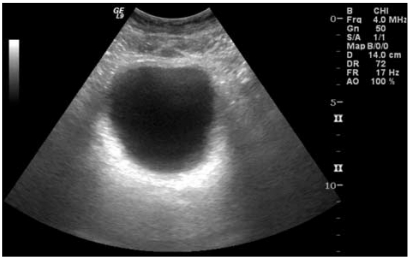Cancer Res Treat.
2010 Dec;42(4):244-246.
Reversible Proximal Renal Tubular Dysfunction after One-Time Ifosfamide Exposure
- Affiliations
-
- 1Department of Hematology-Oncology, Chonnam National University Medical School, Gwangju, Korea. drwookyun@chonnam.ac.kr
Abstract
- The alkylating agent ifosfamide is an anti-neoplastic used to treat various pediatric and adult malignancies. Its potential urologic toxicities include glomerulopathy, tubulopathy and hemorrhagic cystitis. This report describes a case of proximal renal tubular dysfunction and hemorrhagic cystitis in a 67-year-old male given ifosfamide for epitheloid sarcoma. He was also receiving an oral hypoglycemic agent for type 2 diabetes mellitus and had a baseline glomerular filtration rate of 51.5 mL/min/1.73 m2. Despite mesna prophylaxis, the patient experienced dysuria and gross hematuria after a single course of ifosfamide plus adriamycin. The abrupt renal impairment and serum/urine electrolyte imbalances that ensued were consistent with Fanconi's syndrome. However, normal renal function and electrolyte status were restored within 14 days, simply through supportive measures. A score of 8 by Naranjo adverse drug reaction probability scale indicated these complications were most likely treatment-related, although they developed without known predisposing factors. The currently undefined role of diabetic nephropathy in adult ifosfamide nephrotoxicity merits future investigation.
MeSH Terms
Figure
Reference
-
1. Klastersky J. Side effects of ifosfamide. Oncology. 2003; 65(Suppl 2):7–10. PMID: 14586140.
Article2. Stöhr W, Paulides M, Bielack S, Jürgens H, Treuner J, Rossi R, et al. Ifosfamide-induced nephrotoxicity in 593 sarcoma patients: a report from the Late Effects Surveillance System. Pediatr Blood Cancer. 2007; 48:447–452. PMID: 16628552.
Article3. Rossi R, Gödde A, Kleinebrand A, Riepenhausen M, Boos J, Ritter J, et al. Unilateral nephrectomy and cisplatin as risk factors of ifosfamide-induced nephrotoxicity: analysis of 120 patients. J Clin Oncol. 1994; 12:159–165. PMID: 8270973.
Article4. Van Dyk JJ, Falkson HC, Van der Merwe AM, Falkson G. Unexpected toxicity in patients treated with iphosphamide. Cancer Res. 1972; 32:921–924. PMID: 4552918.5. Nissim I, Horyn O, Daikhin Y, Nissim I, Luhovyy B, Phillips PC, et al. Ifosfamide-induced nephrotoxicity: mechanism and prevention. Cancer Res. 2006; 66:7824–7831. PMID: 16885387.
Article
- Full Text Links
- Actions
-
Cited
- CITED
-
- Close
- Share
- Similar articles
-
- Selective Proximal Tubule Injury and Progressive Renal Failure due to Ifosfamide and Cisplatin in a Patient with Ovarian Cancer
- A Case of Distal Renal Tubular Acidosis by Damage of H+-ATPase Pump after Paraquat Intoxication
- Ifosfamide-induced Fanconi syndrome with diabetes insipidus
- Assessment of Cadmium in Blood and Urine of Occupationally Exposed Workers and Renal Dysfunction by Cumulative Exposure Estimate
- Ifosfamide in the pediatric malignant solid tumors


